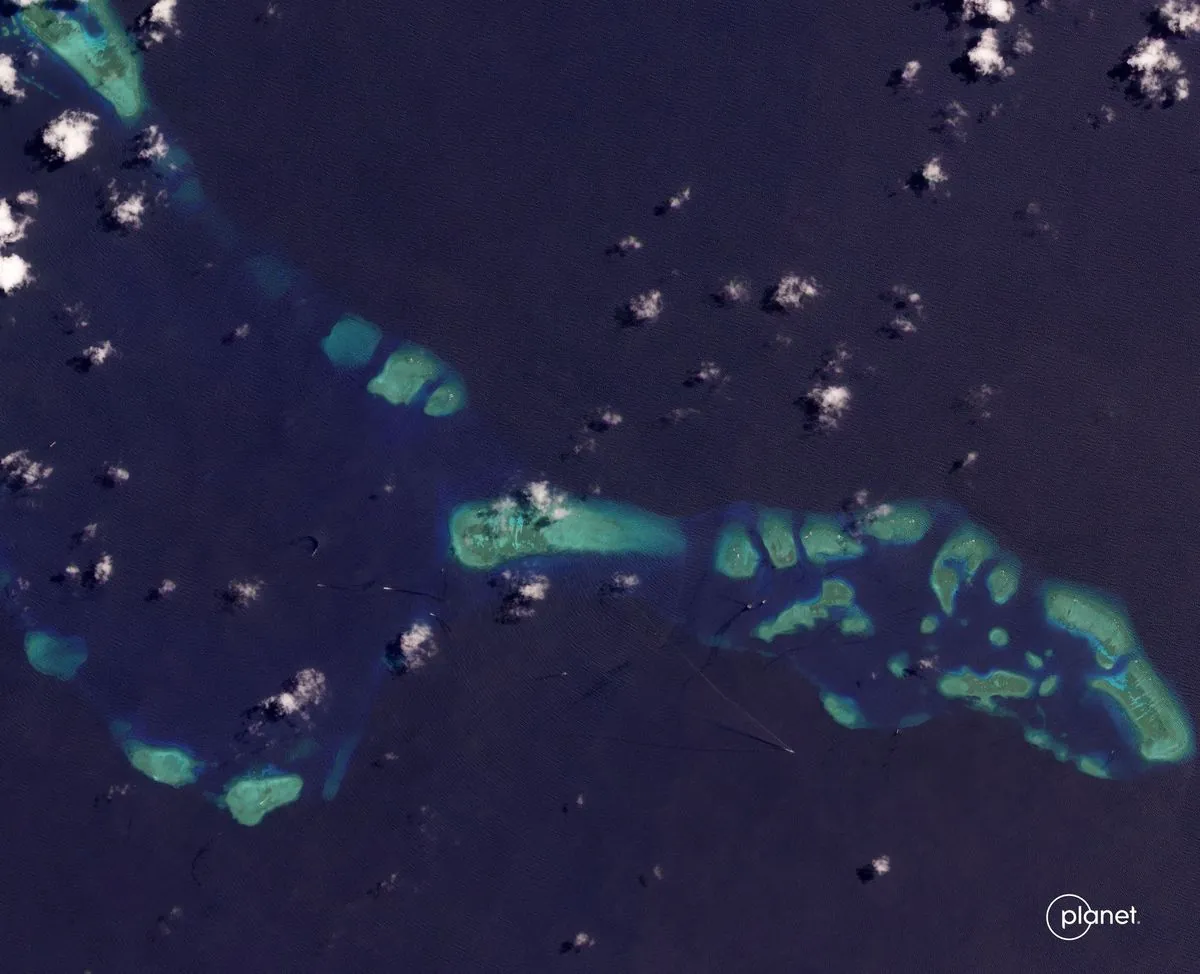Tensions Escalate as Chinese and Philippine Vessels Collide in South China Sea
A light collision between Chinese and Philippine vessels near Sabina Shoal in the South China Sea has heightened tensions. Both sides offer conflicting accounts of the incident, highlighting ongoing territorial disputes.

In a recent incident that has further strained relations in the South China Sea, vessels from China and the Philippines were involved in a light collision near Sabina Shoal. This event, occurring approximately one week ago, has reignited tensions in the region's ongoing territorial disputes.
Gan Yu, spokesperson for the Chinese coast guard, stated that a Philippine vessel entered waters around Sabina Shoal, ignoring warnings and causing a collision with a Chinese vessel. Yu asserted that the Philippine ship's actions were "unprofessional" and "dangerous," placing full responsibility on the Philippine side.
Conversely, the Philippine Bureau of Fisheries and Aquatic Resources reported encountering aggressive maneuvers from eight Chinese maritime forces. They claimed these actions were aimed at obstructing their vessel's humanitarian mission to supply Filipino fishermen with essential provisions.
This incident is part of a larger pattern of confrontations in the South China Sea, a body of water covering approximately 3.5 million square kilometers. China's expansive "nine-dash line" claim encompasses about 90% of this area, conflicting with the territorial claims of several Southeast Asian nations.

The South China Sea's strategic importance is underscored by its rich natural resources and critical shipping lanes. It is estimated to contain about 11 billion barrels of oil and 190 trillion cubic feet of natural gas, while also handling roughly one-third of global shipping traffic.
The recent collision occurred near Sabina Shoal, located about 140 kilometers west of the Philippine province of Palawan. This area falls within the Philippines' internationally recognized exclusive economic zone, as determined by the United Nations Convention on the Law of the Sea (UNCLOS), which came into force in 1994.
"Sabina Shoal is within the Philippines' exclusive economic zone."
Despite this ruling, tensions persist. Just five days before this incident, another collision between Chinese and Philippine coast guard ships was reported near the same area. These events highlight the fragility of recent diplomatic efforts, including an agreement reached last month between China and the Philippines to prevent confrontations at Second Thomas Shoal.
The South China Sea's complex geopolitical landscape is further complicated by its rich biodiversity, hosting over 3,000 fish species. This ecological significance adds another layer to the already multifaceted disputes in the region.
As tensions continue to simmer, the international community watches closely. The Association of Southeast Asian Nations (ASEAN) has been working on a Code of Conduct for the South China Sea since 2002, aiming to establish guidelines for peaceful resolution of disputes. Meanwhile, the United States has conducted "freedom of navigation" operations in the area since 2015, adding another dimension to the regional dynamics.
With both sides maintaining their positions, the recent collision serves as a stark reminder of the ongoing challenges in managing territorial disputes in this crucial maritime region. As diplomatic efforts continue, the international community remains hopeful for a peaceful resolution to these long-standing conflicts.


































